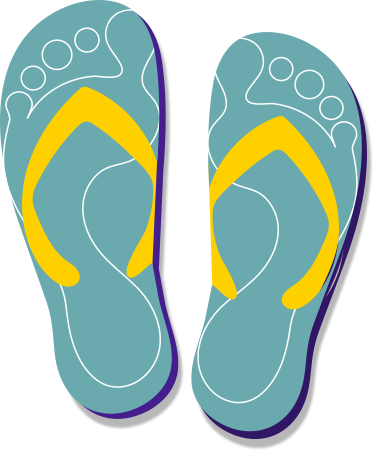Identify
Verrucas are warts on the sole of the foot, commonly referred to as ‘plantar warts’.
Verrucas range in size from 1mm to over 1cm. They usually grow deep into the skin, appearing as areas of flat, thicker skin with a harder edge around a softer centre. They have a rough surface and are surrounded by a raised edge. On closer examination, small black spots can be seen in the verruca. These are not roots, as some people believe. The black spots are caused by bleeding in the verruca as a result of standing and walking on it.
Causes
Verrucas are an infection of the skin caused by a virus called the human papilloma virus (HPV) which is highly contagious.
We are especially prone to infection if our immune system is weakened, for example if we’re tired or run down.
We’re also prone to infection if the skin on our feet is damaged by cuts or scratches and comes into contact with rough surfaces contaminated with the virus.2,3
Infection
The viral infection is spread through skin contact with contaminated surfaces. This explains why people often catch verrucas in communal changing areas, like those at swimming pools and gym clubs.
Children between the ages of 12 and 16 are particularly prone to catching the virus.1,2
Virus-infected skin cells are shed onto the floor and passed onto others walking over the same area. If someone has a verruca, the virus can spread to other parts of their body as well as to other people.
Location
Verrucas tend to appear on weight-bearing areas of the sole of the foot, making them particularly uncomfortable and painful to walk on. In addition, verrucas can be more painful when you wear tight fitting shoes.
Healing
Verrucas may go away by themselves eventually, however this can take quite a while, and there is always the risk of spreading them to others or even getting more yourself because they are contagious. So it is a good idea to treat your or your family’s verrucas as soon as they first appear.
The longer verrucas and warts are left untreated, the harder they can be to remove, so if you have children, it’s worth occasionally checking their hands and feet in particular.
FACT...
It’s always best to wear footwear in places like communal showers and sports changing rooms – and make sure you use your own towel.3



